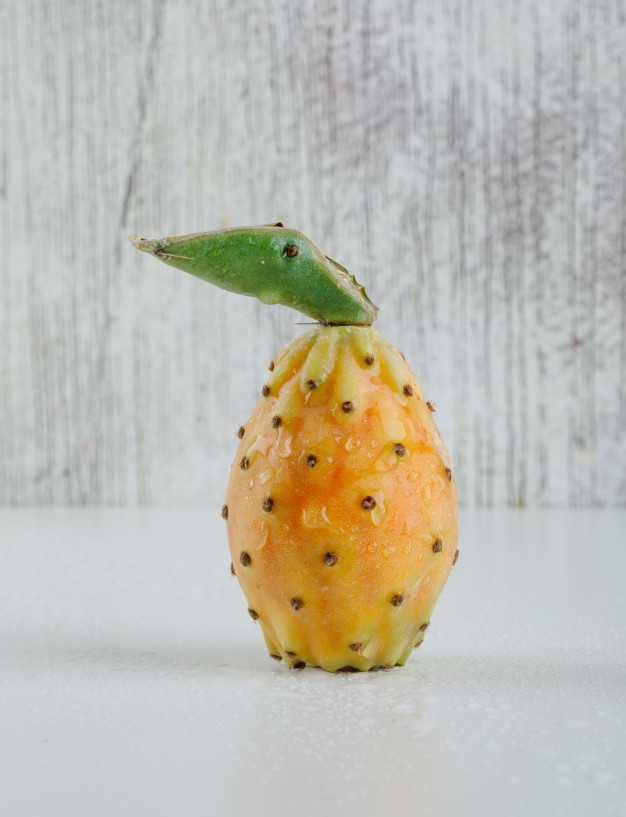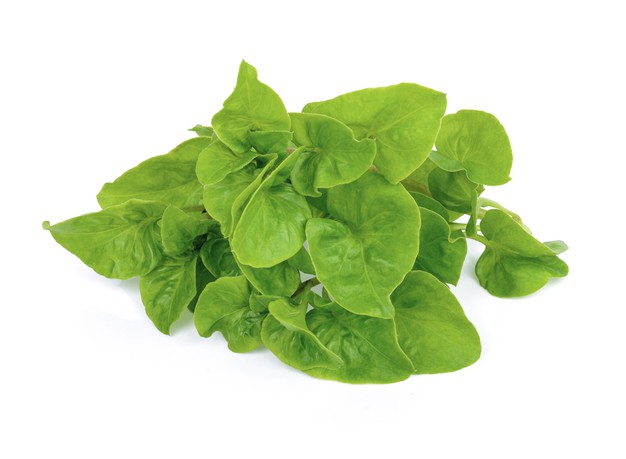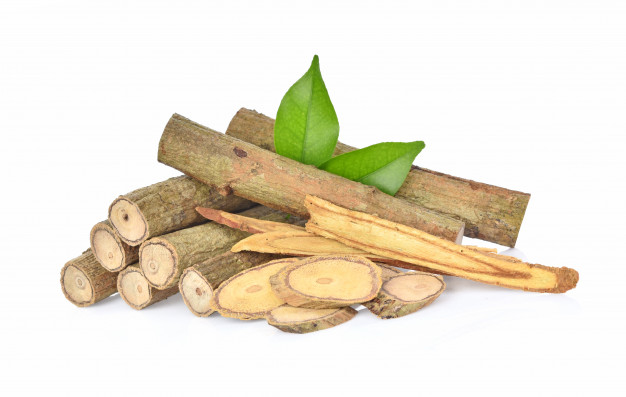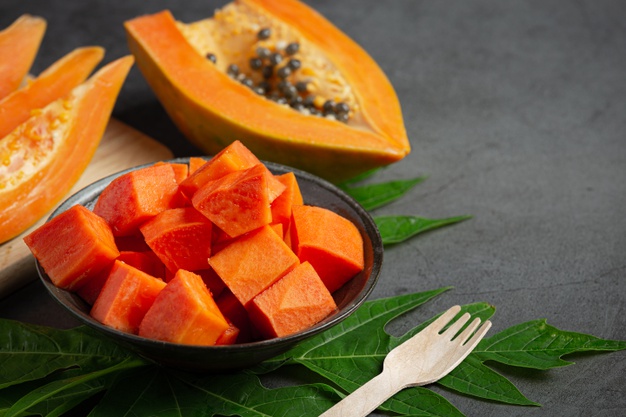Prickly pear is a nutritious fruit belongs to Cactaceae family. It is also known as nopal, cactus pear fruit, gracemere-pear and westwood-pear. It has been traditionally used for numerous medicinal purposes.
General information regarding prickly pear
- It is extensively used in the diet of Mexican as well as Mexican-American culture
- The young plant is generally utilized for consumption whereas older plants cannot be consumed due to their toughness
- It is a juicy fruit
- It is sweet in taste
Nutritional composition
- It contains lesser amount of carbohydrate
- It contains dietary fibre as well
- It also contains lesser amount of fat. Oil extracted from its seed contains several healthy unsaturated fatty acids like oleic acid, linoleic acid, omega 3 fatty acid, omega 6 fatty acid but does not contain saturated fat, Trans fat and cholesterol
- It contains too some extent of protein as well
- It is loaded with several imperative vitamins like Vitamin A, Vitamin C, Vitamin E, Vitamin B1, B2, B3, B6 and B9
- It also contains numerous essential trace elements such as calcium, phosphorus, potassium, magnesium, manganese, zinc, iron, copper and selenium
- It contains various imperative plant compounds like anthocyanin, rutin, phenolic acid, isorhamnetin derivatives, carotenoid etc, which exert various nutraceutical activities
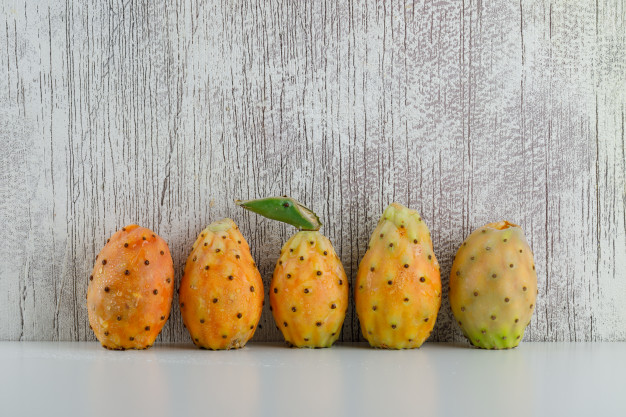

Health benefits
Role on immunity
- It helps to improve the immunological responses of the body as it contains numerous immune boosting nutrients
- Its antioxidant activity is accountable for strengthening the defense mechanism of body by neutralizing free radicals
- Its Vitamin C component plays vital role in enhancing WBC production, which helps in killing and eliminating harmful microorganism from body thus decreases the susceptibility of developing infectious diseases
Role on digestive health
- It helps to improve overall digestive health
- It helps to increase the activity of digestive enzymes hence promotes digestion
- Its fibre component is responsible for promoting regularity. It is associated with stimulating bowel movement and also increases stool mass and softness as a result helps in easy defecation
- Its antioxidant and anti-inflammatory activities are accountable for protecting the entire digestive tract from oxidative and inflammatory damages thus decreases the prevalence of ulcer, inflammatory bowel disease, irritable bowel syndrome etc
- It helps to improve the health of stomach and also helps in soothing it
- It is also associated with enhancing peristalsis, which ultimately helps to improve colonic health and lessen the risk of developing diverticular diseases and colon cancer
Role on hepatic health
- Consumption of prickly pear or its juice is extremely useful for improving hepatic health as it has hepato protective activities
- It helps to protect the liver from free radical induced oxidative damages thus decreases the prevalence of hepatic disorders
- It also helps to promote the functionality of hepatic cells by preventing hepatic cell necrosis. Its fibre content is responsible for decreasing cholesterol concentration in body as a result inhibits fatty infiltration of hepatic cell
- It helps to lessen the prevalence of gall stone as well

Role on skeletal health
- Being a good source of calcium, consumption of prickly pear is thought to be extremely useful for maintaining a healthy skeletal system
- It helps in bone mineralization thus helps to increase bone mass as well as bone mineral density
- It helps to strengthen bones as well as teeth and significantly decreases the prevalence of bone and tooth disorders
Role on skin
- Its consumption or application of oil extracted from prickly pear seed is extremely helpful for improving skin health
- Its oil contains several moisturizing and hydrating fatty acids that help to nourish the skin and makes the skin smooth
- Its antioxidant activities are responsible for preventing ageing
- It also helps in improving skin brightness
- It is awfully effective for decreasing the prevalence of blemishes, dark circles, psoriasis, skin swelling due to infections and dermatitis

Role on hair
- Oil extracted from prickly pear contains several healthy fatty acids, vitamins and minerals, which play imperative role in nourishing the scalp as well as the hair by providing them essential nutrients and promotes hair growth
- It is also associated with making the hair glossy
- It helps to restore the hair shine as well
- Its antioxidant and anti-inflammatory activities are accountable for providing relief from scalp conditions and prevents hair loss
Therapeutic advantages
It has been traditionally used for preventing various health complications like –
- It is extensively used as an effective preventive measure for hyperglycemia. Its fibre content especially pectin content is responsible for decreasing blood sugar concentration as it reduces the absorption of glucose from stomach and intestine
- It is also used for decreasing blood cholesterol level. Its pectin content plays imperative role in eliminating LDL from body. It has seen that consumption of prickly pear is very effective for decreasing plasma cholesterol level as well as hepatic cholesterol level

- Consumption of the extract of prickly pear before drinking alcohol significantly reduces the effects of hangover. It is mainly associated with decreasing the production of inflammatory mediators in body that induce the symptoms of hangover. It also helps to prevent other related complications like nausea, dry mouth etc
- Its fibre contents, phenolic compounds, unsaturated fatty acid contents, antioxidant activities and anti-inflammatory activities make it cardio friendly. As it helps to decrease cholesterol concentration thus decreases the prevalence of fat deposition within blood vessels hence lessen the risk of developing atherosclerosis and coronary artery disease. Its potassium content plays imperative role in reducing hypertension. Its magnesium component is also accountable for maintain normal heart beating. Its consumption helps to improve the functionality of cardiac muscle as well. Its flavonoid components help in normalizing blood platelet stickiness, which ultimately helps to improve cardiac health. Moreover it is believed that consumption of prickly pear is extremely useful for decreasing the prevalence of cardiovascular diseases
- Due to its anti-inflammatory and anti-histamine property it can be extensively used for preventing joint and muscle swelling. Individual suffer from osteoporosis should include it in their diet as it helps to improve the symptoms of osteoporosis
- It helps in reducing body weight too. Its fibre content and lipid lowering activities play vital role in preventing obesity
- It is very effective for decreasing the prevalence of carcinoma. Its flavonoid compounds exert potent anti-carcinogenic activities that help to destroy cancerous cells in body by promoting apoptosis. It is very effective for reducing the prevalence of prostate, breast, ovarian, pancreatic, stomach, lung, cervical and colon cancer
- Its consumption is also very effective for inhibiting premenstrual syndrome
- It helps to improve the symptoms of enlarged prostate as well
- It helps to prevent metabolic syndrome. Being a good source of B vitamins it play imperative role in promoting overall metabolism


General consideration of using prickly pear
- It is better to consume the fruit after peeling the skin
- It can be used for preparing fruit salads
- It can be also used for preparing jam and jellies
- It can be used for preparing smoothie as well
- It is better to preserve it in refrigerator
Risk factors
Its over consumption may cause various digestive disorders like nausea, diarrhoea, bloating etc. It may also develop allergic reaction. On the other hand pregnant and lactating women should also avoid its consumption as it may interfere with baby’s development.
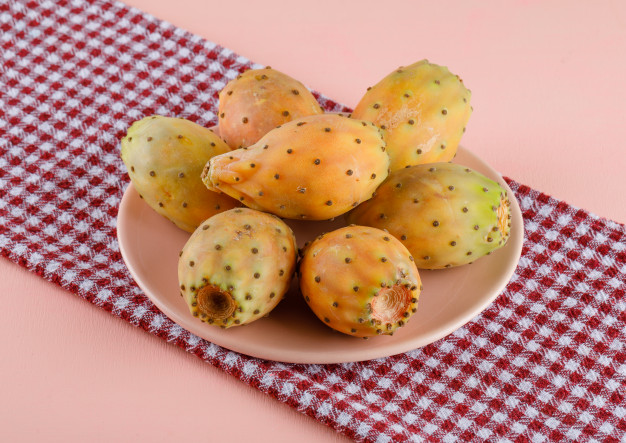
Source:
Brinker, F., 2009. Prickly pear as food and medicine. Journal of dietary supplements, 6(4), pp.362-376.
Dhar, G., 2021. Prickly Pear Cactus (Opuntia Ficus-Indica) the Beles in Ethiopia: A Review on Nutritional Aspects and Health Benefits. Indian Journal of Public Health Research & Development, 12(2).
García, F.H., Coll, L.A., Cano-Lamadrid, M., Lluch, D.L., Barrachina, Á.A.C. and Murcia, P.L., 2020. Valorization of Prickly Pear [Opuntia ficus-indica (L.) Mill]: Nutritional Composition, Functional Properties and Economic Aspects. In Invasive Species-Introduction Pathways, Economic Impact, and Possible Management Options. IntechOpen.
M Jimenez-Aguilar, D., Mújica-Paz, H. and Welti-Chanes, J., 2014. Phytochemical characterization of prickly pear (Opuntia spp.) and of its nutritional and functional properties: a review. Current Nutrition & Food Science, 10(1), pp.57-69.
Madrigal-Santillán, E., García-Melo, F., Morales-González, J.A., Vázquez-Alvarado, P., Muñoz-Juárez, S., Zuñiga-Pérez, C., Sumaya-Martínez, M.T., Madrigal-Bujaidar, E. and Hernández-Ceruelos, A., 2013. Antioxidant and anticlastogenic capacity of prickly pear juice. Nutrients, 5(10), pp.4145-4158.
Meenu, S., 2015. Opuntia (prickly pear) and its health benefits in human nutrition: a review. Annals of Biology, 31(2), pp.294-298.
